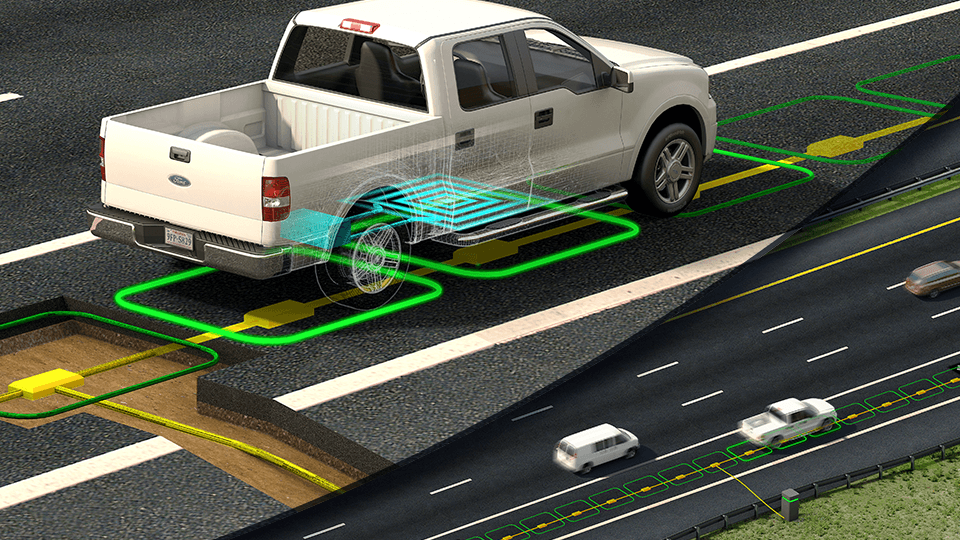Roadway Embedded Wireless Power Transfer Coils
This technology is designed to mitigate negative effects on the performance of electromagnetic coils caused by structural materials such as concrete in the process of being embedded in a roadway or pathway. Insulating materials and a novel coil offset design are implemented to reduce resistance caused by structural materials and preserve the structural integrity of the system.
These coils are part of the wireless power transfer system for electric vehicles, a patented technology commercialized through Sustainable Electrified Transportation (SELECT).
Problem
Structural materials used in roadways have a diminishing effect on electromagnetic coil performance. Concrete, for example, can increase coil resistance by more than 100 times and reduce inductance by more than 100 times upon coil embedment. Though resistance decreases as concrete cures, it remains orders of magnitude higher than before the coil is embedded in the concrete.
Additionally, the intrinsic strength of structural materials used in the process of embedding electromagnetic coils is decreased due to discontinuities that weaken the structure caused by the presence of the coil.
Solution
The roadway-embedded wireless power transfer coil technology uses insulators placed over the coils to reduce or entirely eliminate the adverse impact on coil resistance caused by structural materials. Researchers have determined the optimal range of insulation thickness, ensuring the dissipation factor of the structural material does not inhibit coil performance. Furthermore, the development of a novel offset coil design allows concrete to flow through coils to create a strong, continuous structure- an improvement on current technologies.
Benefits
In addition to benefitting the structural integrity of the materials used in the roadway, the novel offset pattern between coils can increase or shape the magnetic flux of the coil, allowing the system to be tuned for increased efficiency. Commercial availability of this technology could result in increased durability and productivity of wireless power transfer systems used to charge electric vehicles and devices.
Applications
This technology is ideal for static and dynamic wireless power transfer systems used to charge vehicles and machinery, especially those in high-traffic or high-stress areas.

Contact
Questions about this technology including licensing availability can be directed to:
Alan Edwards, MA, JD
Manager, Technology Transfer Services
(435) 797-2328 alan.edwards@usu.edu
Inteum ID C17012
Inventors
Ryan J. Bohm, Power Electronics Lab
Trevor G. Gardner, Civil and Environmental Engineering Dept.
Marvin Halling, Civil and Environmental Engineering Dept.
Regan A. Zane, Power Electronics Lab, Electrical and Computer Engineering Dept.
Development Stage
TRL 3

